Every dog serves us in some way, if only to provide us with companionship and unconditional love. But service dogs are in a special category, trained specifically to help people with disabilities or life-threatening conditions.
The best service dogs have traits that make them indispensable to their owners by helping them in ways that restore their independence and improve their quality of life.
What Is a Service Dog?
Service dogs are trained to help people with physical or mental disabilities lead more independent lives. Perhaps the best-known type of service dog is a guide dog for the blind. But, they also include dogs who aid the hearing-impaired, mobility dogs who can fetch or carry items for owners, and medical alert dogs who can detect and warn owners of an allergen or impending seizure or attack. Psychiatric service dogs also perform tasks that can make life more tolerable for those diagnosed with psychiatric disorders or mental disabilities.
Service dogs are a type of working dog, different from emotional support animals and therapy dogs. While those dogs also provide services to people, service dogs are trained specifically to meet the needs of individuals with disabilities.
What Makes a Good Service Dog?
The best service dogs are smart and have temperaments that make them easy to train as well as reliable, calm under pressure, and not easily distractible. Breeds that have long histories of these traits and are purposely bred to maintain these qualities make the best service dogs. Service dogs must remain focused, attentive, and responsive to their owners’ needs, and unruffled by crowds of people, traffic, loud noises, or other animals.
Popular Service Dog Breeds
When you think of service dogs, the first breeds that come to mind are likely Labrador Retrievers, German Shepherd Dogs, and Golden Retrievers. These breeds are indeed a popular choice among service dog training and breeding organizations. But they’re far from the only breeds that are well-suited to this line of work. While some service dog breeds are well-known for their use in assisting humans, others may surprise you.
Labrador Retriever
Labrador Retrievers are one of the most popular service dog breeds, thanks in part to their friendly and easy-going nature. While sociable, Labs are also devoted and eager to please. This, coupled with high levels of intelligence, makes them both easy to train and attentive to their owner’s needs. Physically, Labs are hardy and athletic, enabling them to keep up with their handlers as they go about their day.
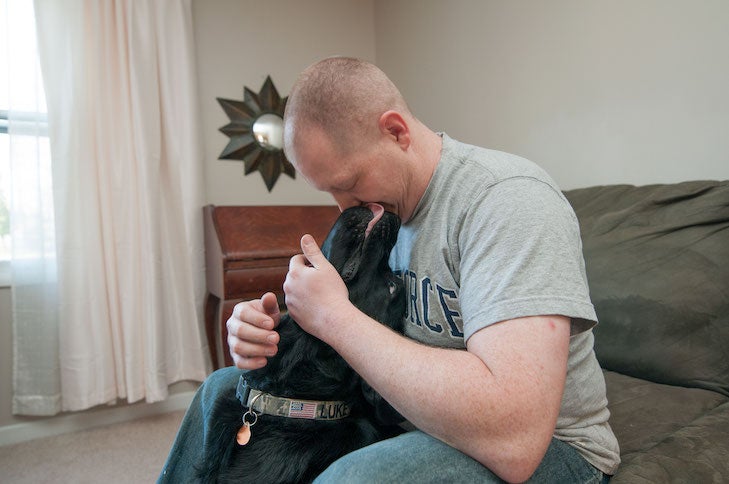
Golden Retriever
Like Labs, Golden Retrievers are also a popular choice as service dogs, for many of the same reasons. Set apart by the dense golden coat from which this breed gets its name, the Golden’s sociable nature and easy-going temperament make for dogs who don’t get ruffled easily. The breed’s intelligence and eagerness to please means they are easy to train for specific tasks. Goldens are an active breed requiring daily exercise, making them a great fit for on-the-go handlers in need of a second set of eyes.
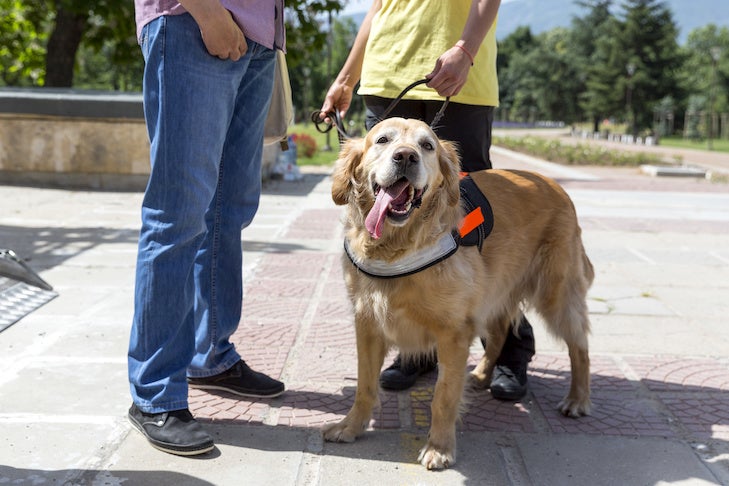
German Shepherd Dog
The first guide dogs in the 1920s were German Shepherd Dogs, and this breed remains a popular choice for service work today. Intelligent, alert, fearless, and extremely loyal, GSDs can learn a wide range of tasks, making them capable of assisting with a variety of disabilities.
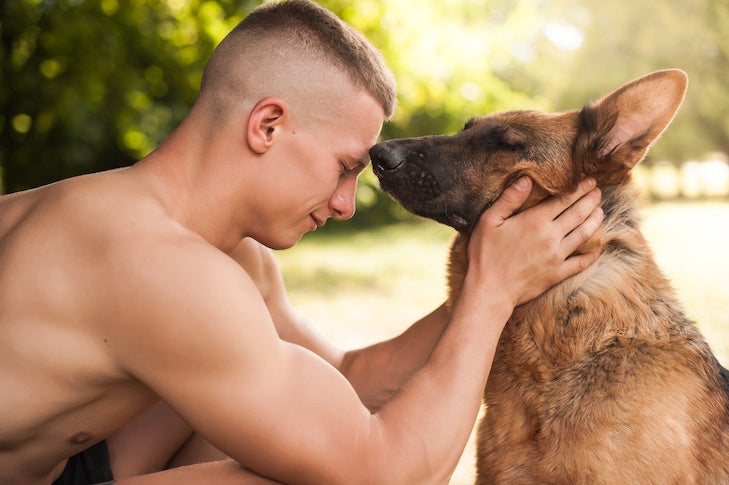
Poodle
This intelligent, cheerful breed has a nose for detecting allergens, a life-saving talent for those suffering from deadly allergies. But their trainability and sociable nature also make them good at a wide range of service dog tasks. The larger Standard Poodle can serve well as a mobility dog, while the more diminutive Miniature and Toy varieties can serve in less physically demanding roles. Poodle coats have less dander and are less likely to cause allergic reactions than many other breeds, which makes the poodle a good choice for people who suffer from allergies.
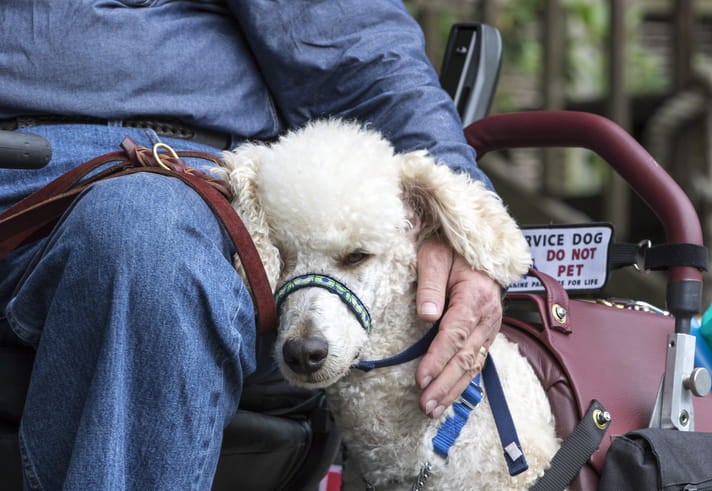
Bernese Mountain Dog
These burly giants possess the intelligence, laid-back demeanor, and loyalty of a good service dog. Large enough to support the weight of an adult who needs help to get up and strong enough to pull a wheelchair out of a tough situation, Bernese Mountain Dogs can also be taught to fetch and carry items. While friendly and loving with their owners, these dogs can be aloof with strangers, a trait that will help keep them from getting distracted from their duties.
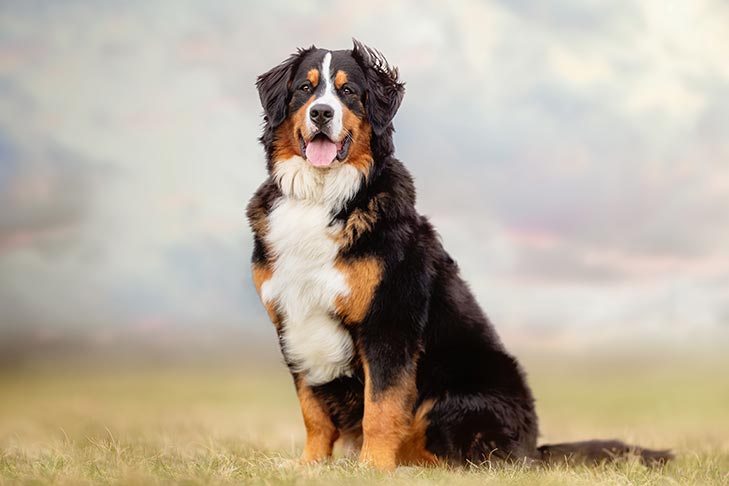
Great Dane
This giant breed’s height and strength can lend balance and support to the mobility-impaired. Their sweet and loving nature also enables them to be a good match for psychiatric support, particularly for children. Intelligent and agreeable, Great Danes can be trained for a wide variety of service dog tasks. However, their massive size means they don’t make the best fit for everyone.
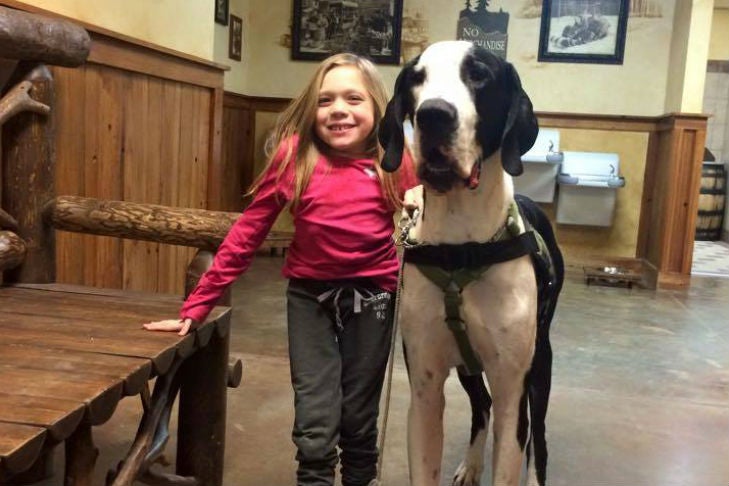
Collie
Collies possess many of the traits that make them suitable for service dog work. This smart breed is often trained to sense impending seizures, making them an excellent choice as epileptic service dogs. Collies get along great with children and have a calm and cheerful demeanor that makes them good at assisting those with PTSD and other psychiatric disorders. The thick double coat of a rough-coated Collie does require regular grooming, which may be a deterrent to handlers with certain types of physical disabilities.
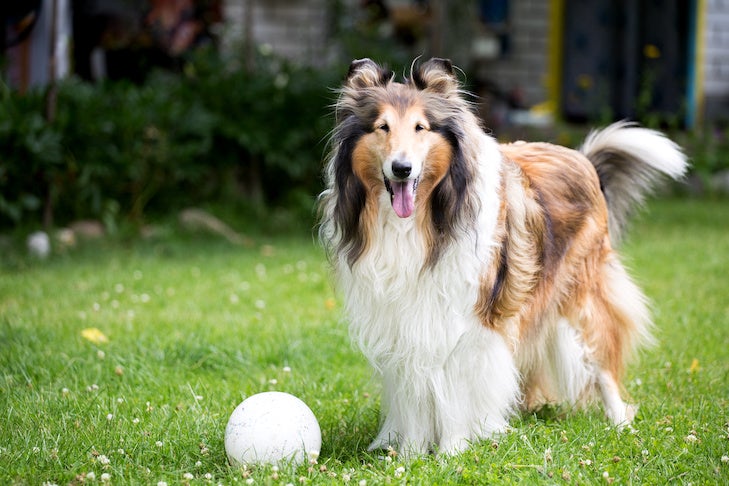
American Staffordshire Terrier
A stocky build makes AmStaffs a good fit for mobility service, but their ability to help doesn’t stop there. These smart and good-natured dogs possess the trainability, confidence, and easy-going temperaments that make them suitable for a wide range of service dog tasks.
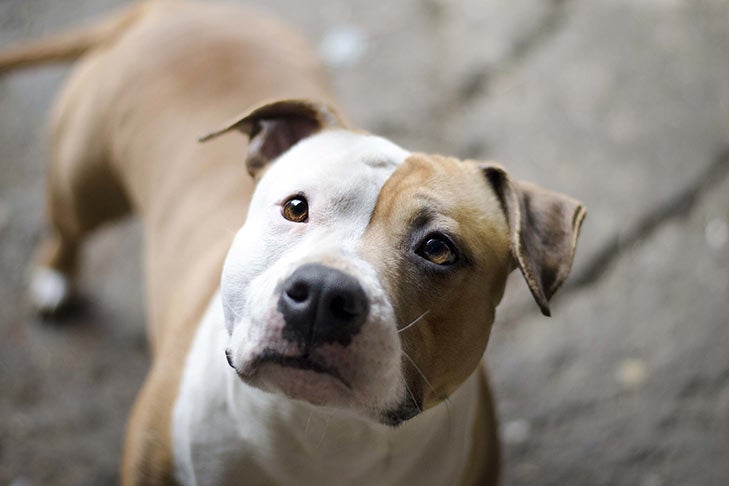
Pomeranian
Perhaps the most surprising breed on this list, the tiny, fluffy Pomeranians have proven adept at alerting their owners to symptoms and complications associated with diabetes, Parkinson’s disease, or asthma. Intelligent and alert, Poms also make excellent service dogs for the hearing-impaired and those with mental disabilities. Their tiny size makes them portable and easy to take into spaces where large dogs might have a harder time.
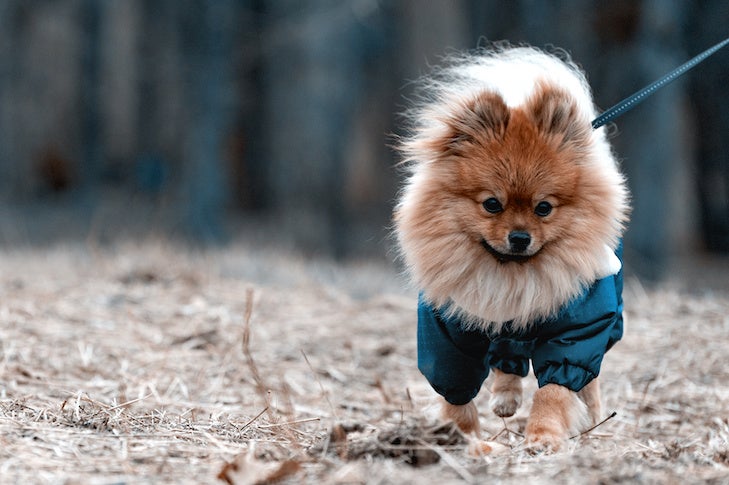
There are so many ways in which service dogs can assist humans. Thus, it’s not so surprising to see such variety among the top service dog breeds. But while size, shape, strength, and physical ability differ, these breeds all share one important trait: Their hard work can make all the difference in improving the quality of life for their owners.

